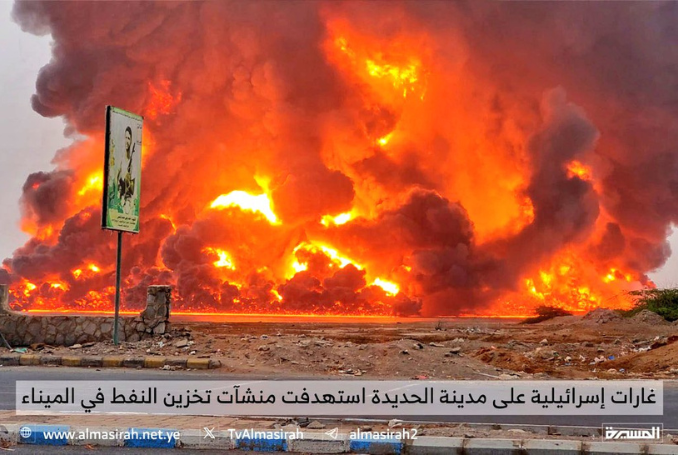
Israeli fighter jets on Saturday launched heavy raids on the Hodeidah province west of Yemen, a day after the Ansarallah group bombed a building in central Tel Aviv, killing an Israeli soldier and wounding several others.
According to Israeli media, Israeli Prime Minister Benjamin Netanyahu this morning invited members of the Security and Political Affairs Cabinet to an extraordinary meeting at the Defense Ministry.
The session lasted about four hours, at the end of which the cabinet approved an attack on Yemen, specifically on the port of Hodeidah west of Yemen.
While the ministers were meeting, Israeli fighter jets set off in the direction of Hodeidah to deliver the first announced Israeli strike on Yemen territory.
The following is an explanation of the route taken by the fighters, the distance traveled to reach Yemen, the nature of the targets and the human and material losses.
‘Escalating Support for Gaza’ – Ansarallah Vow to Respond to Israeli Airstrikes on Yemen
1 – Where did the Israeli fighter jets start?
Israeli fighter jets took off from the Naqab (Negev) desert, where many air bases are located. Some news websites raised the possibility that the jets originated from another country.
2 – How many planes were involved in the attack?
Twenty F-15 fighter jets reportedly participated in Israeli strikes on Hodeidah.
3 – How far did the Israeli jets fly and what path did they take?
According to the theory that the Israeli jets originated from Israel itself, they traveled about 1,900 kilometers before reaching Yemen’s Red Sea city of Hodeidah.
Before reaching Hodeidah, Israeli fighter jets crossed the territorial airspace of Egypt, Sudan and Saudi Arabia, as indicated by their Red Sea route.
Al-Masirah publishes initial footage of the civilian casualties of the IOF's bombing of Hodeidah in western Yemen today, July 20th, 2024.
FOLLOW OUR LIVE BLOG: https://t.co/NT37ztvXQB pic.twitter.com/B2lZuRkztH
— The Palestine Chronicle (@PalestineChron) July 20, 2024
4- What were the targets bombed by Israeli fighter jets?
Israeli fighter jets bombed vital facilities in the city of Hodeidah, mainly oil tanks in the port of Hodeidah. Many oil depots appear to have been bombed because there were very large fires in the port.
The bombing also affected offices at the port belonging to the Yemen Petroleum Company.
The port of Hodeidah is of great importance to Yemen, as it is the main port from which trade and aid enter the country.
Israeli fighter jets also bombed the main power generation and distribution plant in Hodeidah city.
Focusing on the oil and hydrocarbon sector reflects Israel’s desire to cripple the country’s vital facilities.
Israel claimed responsibility for bombing the port of Hodeidah and said it had also bombed Ansarallah military positions.
Ansarallah, however, stressed that the strikes only targeted civilian facilities.
In Coordination with the US – Yemenis Killed, Wounded in Massive Israeli Strike
5- What about losses?
Israeli airstrikes have taken a heavy toll on the energy sector and the country’s main port.
The Ministry of Health in Yemen announced deaths and injuries following Israeli raids on oil storage facilities in the port of Hodeidah, without indicating a specific toll.
(AJA, PC)









Hmmm…destroying vital infrastructure??
That has America stamped on its forehead.